Imagine sun-kissed beaches, imposing mountains, bustling cities, ancient sites, and a plethora of museums. These diverse attractions can all be found in the beautiful country of Greece, which I have called my home for 24 years. I live on the island of Crete, which is the largest of the Greek islands and the furthest south. There are around 6000 islands in total, 227 of which are inhabited. They, together with the wonders of mainland Greece, can make it difficult to decide where to go, especially if you are a first-time traveller to the country.
I have put together three possible itineraries of around 10 days, which should give you a taste of Greece. One is to the mainland, while the other two are to some of the islands. All start in the capital, Athens, which will wow you with its historical sites, amazing food, cafe culture, shopping, and nightlife. If you have more time, you can always add one of the island itineraries to the mainland trip. I’ll first give you some tips about travelling to Greece, which should help to make your holiday hassle-free.
Contents
Greece Itinerary Suggestions To Plan Your Trip
Best Time To Visit
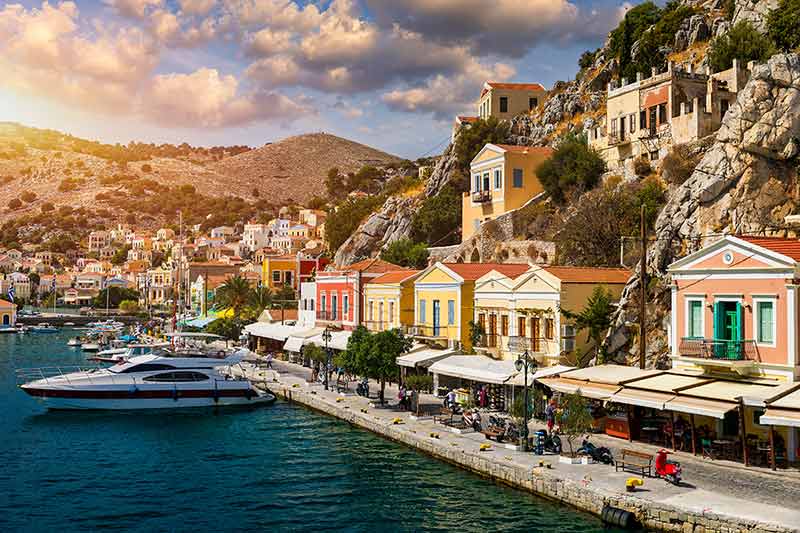
The time of year you visit Greece will determine the experience you have. If you like hot weather, head to Greece in the summer when temperatures can reach 40C (104F) or more. It is a great time to hit the beach and swim, but the heat can be overwhelming at the archaeological sites.
Be prepared to start your day early if you want to beat the heat of the midday sun. You will also find that prices are at their highest and because the country is popular, it is essential to pre-book accommodation and travel.
If you’re not keen on very hot weather, head to Greece in the spring or autumn when it is still warm but not stifling. Prices are lower and you can generally get away without pre-booking if you prefer a more casual experience.
Many of the islands shut down to tourism in the winter, although the major cities on the bigger islands remain open, as do the cities on the mainland.
The museums and archaeological sites are open year-round, and winter in Greece can be the best time to visit as they are virtually empty, however, the weather in winter isn’t predictable.
The southern islands like Crete can stay very mild as they did this past winter, but northern Greece can get cold and it even snows.
How To Get There
Greece has several international airports including Athens and Thessaloniki, which have direct flights to and from many destinations all over the world.
If you are travelling to the islands in the summer, there are direct flights from major cities in Europe.
In the off-season, however, if you want to get to the islands, you have to fly to Athens and then get a connecting flight.
The national airline of Greece is Aegean, and it connects most islands to the mainland.
Ferries are also available for travel to the islands.
Some of the smaller islands don’t have an airport so the only way to reach them is by ferry.
As well as connecting the islands to the mainland, there are ferries connecting some of the islands.
Finding Accommodation
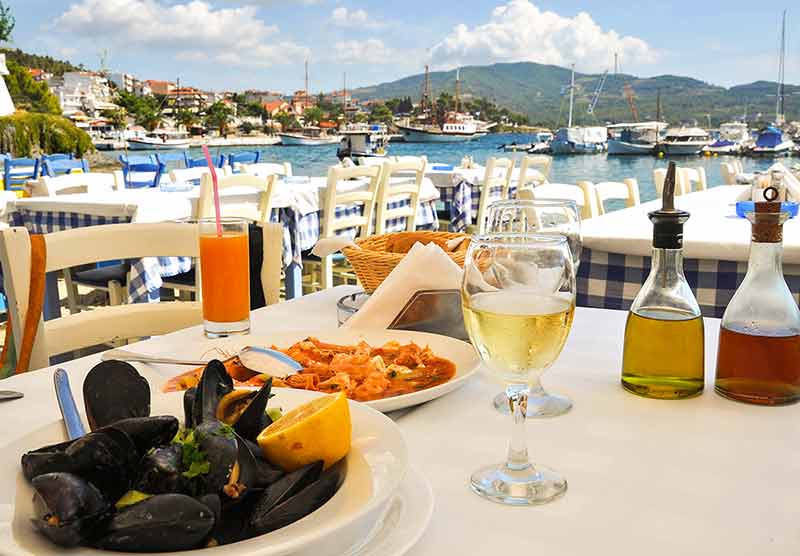
If you are travelling in the high season, it is a good idea to book in advance otherwise you could be wasting good holiday time searching for somewhere to stay and there is no guarantee that you will find anywhere.
The same goes for travel including ferries and car hire.
Good sites for finding holiday accommodation in Greece are Booking.com, Trivago, and Airbnb.
How To Get Around
The easiest way to get around is to hire a car which allows you to go off the beaten track, however, be warned, driving in Greece is not for the faint of heart and the country has one of the highest rates of road accidents in Europe.
Greeks are aggressive drivers and don’t take much notice of the rules, so be prepared.
I wouldn’t bother hiring a car in Athens as it is not an easy place to drive and anyway, the bus and metro services are excellent, however, if you want to explore the mainland outside Athens, driving will be a little easier and the islands are much quieter.
All the big hire car companies are represented in Athens, as well as local companies and most of the islands have car rental companies.
The bus services are good between major towns, but they are few and far between when travelling to small villages off the beaten track.
You need to book long-distance buses in advance, but not the local routes.
There is an excellent train service on the mainland but there aren’t any trains on the islands.
Athens has a good metro service, and one is being built in Greece’s second-largest city, Thessaloniki.
In Athens, you can buy a day or five-day pass to use on all Athens transport apart from the airport line. The day pass is 4.10 euros, while the five-day pass is 8.10 euros. While previously you could only use cash on public transport, contactless payments have recently been introduced in 33 cities and islands.
There are taxis everywhere, both on the mainland and on the islands and the fares are reasonable.
Money Or Credit Card
Greece uses the euro and unlike many countries, such as the UK and the US, which have become almost cashless societies, cash is still widely used in Greece.
While in the major cities and tourist resorts, credit cards are accepted in most places, in smaller villages, tavernas will only accept cash so it is a good idea to always have money with you.
Even though I live close to a major resort, the taxi company I use only takes cash, so be prepared.
You can find ATMs everywhere that there is a bank and there are extra ones in tourist resorts, so you won’t have problems getting cash.
When it comes to tipping, it’s not expected as it is in the US, but it is appreciated. I usually leave 10% in restaurants and tavernas, as well as in taxis.
Food in Greece

Because Greece has been occupied by different nations over the years, such as the Ottomans and the Venetians, food in Greece is a fusion of flavours.
The most famous Greek dish is moussaka, which is made up of layers of aubergine, minced lamb in tomato sauce, potatoes, and a topping of bechamel sauce and cheese.
Greek salad is popular and is often eaten as a light lunch.
Calamari (fried squid), stifado (beef or rabbit slow-cooked in tomato sauce with shallots), tzatziki (a yoghurt and cucumber dip), spinach and cheese pies, and pastitsio (Greek lasagne) are all popular.
Vegans don’t need to feel left out as there are many dishes they can try, such as gemista (stuffed tomatoes and peppers), fasolada (bean soup), fried vegetables, horta (wild greens), gigantes (white beans in a tomato sauce), and dolmades (stuffed vine leaves).
In Crete and other southern Greek islands, the Mediterranean diet is followed and is said to be the healthiest in the world.
It celebrates olive oil, vegetables, seafood, grains, cheese, olives, herbs, and red wine.
Meat is only eaten a couple of times a week.
Let’s now look at the itineraries I have thought up which will hopefully give you a good introduction to Greece.
Itinerary 1 – Mainland Greece
This itinerary takes you around the mainland and covers a lot of ground, so hiring a car would be the best way to explore. However, there are buses which you could take, but they take much longer than a car. The first two days are spent in Athens where you don’t need a car as public transport is good while driving is hectic, and it is also difficult to park.
Day 1 Athens
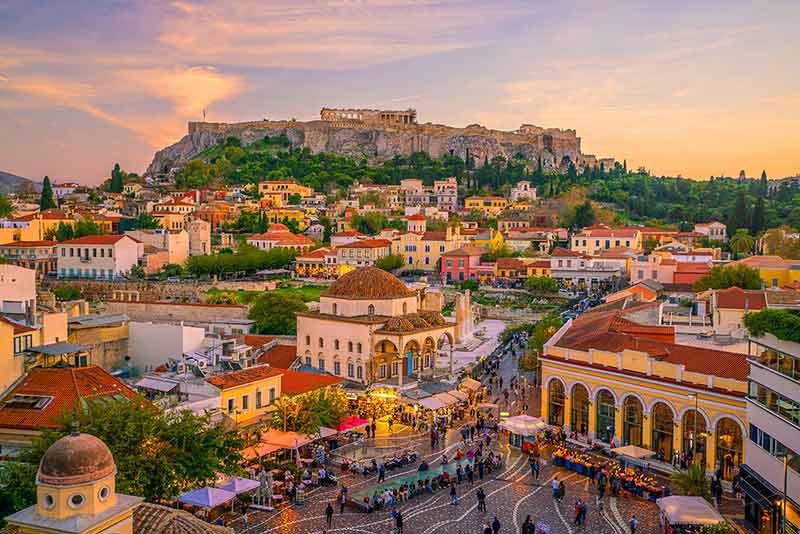
In the morning, visit the Acropolis, built in the 5th century BC, which is a collection of buildings, including the Parthenon, a temple that was dedicated to the goddess, Athena.
Another beautiful temple is the Erechtheion which was dedicated to Erechtheus, a mythical king of Athens. If you are visiting the Acropolis in the summer, it is best to go early in the day as it involves a walk uphill.
Afterwards, visit the Acropolis Museum, which houses artefacts from the Acropolis, such as the head of a statue of Alexander the Great and marble statues from the Erechtheion.
There is a restaurant in the museum so you can have lunch there. It offers panoramic views of the Acropolis and Athens.
After a leisurely afternoon, spend the evening in the famous Plaka neighbourhood which is situated close to the Acropolis. Here you can have dinner in one of the many tavernas and go shopping. It is especially renowned for its unique jewellery shops.
The Acropolis Museum is at Dionysiou Areopagitou 15, Athens. You can save money and time by getting the Acropolis and 6 Archaeological Sites Combo Ticket.
Day 2 Athens
In the morning, visit the National Archaeological Museum, which contains one of the best collections of Greek art dating back as far as 5000 BC. There is a cafe on site where you can have lunch.
In the afternoon, visit the Ancient Agora where political gatherings and public debates were held.
An impressive building in the Agora is the Temple of Hephaestus which was built between 460 and 420 BC. It was dedicated to the god, Hephaestus, who was the god of fire, volcanoes, forges, and blacksmithing.
Spend the evening in the Monastiraki district, which is less touristy than Plaka, giving you more of an idea of how the locals live.
They gather in the lively Monastiraki Square from where you can reach Ermou Street with its fantastic shops selling jewellery, clothes, and souvenirs.
The National Archaeological Museum is at 44 Patission Street, Athens.
Day 3 Nafplio
Head to Nafplio either by driving or on the bus 137 km (85 miles) away.
Nafplio is a seaside resort so you may want to spend the day on the beach and relax after your two busy days in Athens, however, there are plenty of other things to do if you aren’t a beach lover.
The Old Town is lovely with its cobblestoned and narrow streets, and there are plenty of tavernas there to enjoy a leisurely lunch.
In the afternoon, climb the 999 steps to the 17th-century Venetian Palamidi Castle, 206 metres (708 feet) above sea level.
You will have fantastic views of Nafplio and the sea from the top but if you can’t face the climb, don’t worry as there is a lift.
There are also seven museums in Nafplio including an archaeological museum, a war museum, and a folklore museum, so you won’t be stuck without anything to do.
A guided walking tour of the town is a good way to explore and meet the locals.
In the evening, take a stroll along the Arvanitia Promenade, a popular place for locals where you will be rewarded with an azure blue sea and a beautiful sunset.
Day 4 Nafplio – Delphi
The distance between Nafplio and Delphi is 285 km (177 miles).
This is when it is a good idea to hire a car as it only takes three and a half hours, while if you are going by bus, you have to return to Athens and then get another bus to Delphi or join this tour.
The journey can take over six hours.
Another advantage of driving is that you can stop at the 4th-century theatre, the Asclepion of Epidaurus which is 35.5 km (22 miles) away.
It is a well-preserved theatre with great acoustics.
There is also a small museum with such artefacts as stunning classical statues.
I would suggest that you stay in the modern town of Delphi and have a relaxing evening with a meal in town.
Day 5 Delphi
It is easy to walk to the ancient site of Delphi from the modern town as it is only 1 km (0.62 miles) away, however, if you don’t want to walk, a taxi won’t cost much.
Delphi is an important archaeological site, so I suggest that you spend a few hours exploring it.
Here you will find the Oracle of Delphi from where the goddess, Apollo, was supposed to deliver prophecies.
The site is extensive, and you can take a guided tour which will give you a better insight into the significance of the ruins.
You will be taken to the Temple of Apollo, the theatre, and the stadium.
Next to the site is a museum, which showcases artefacts from Delphi and other sites in the region.
Day 6 Delphi – Meteora
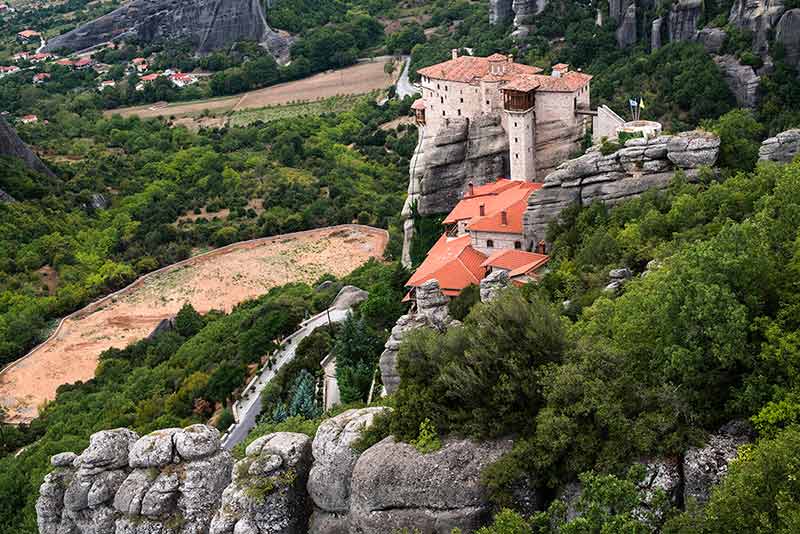
Today is another day of travelling, this time to Meteora, which is 234.5 km (145.7 miles) from Delphi.
It takes three hours by car and around five hours by bus. The bus goes to Trikala where you get another bus to the town of Kalambaka.
I suggest that you stay here for the night as it is close to Meteora, a must-see on your journey around mainland Greece.
It is a UNESCO World Heritage Site and is a collection of monasteries perched high on a rock formation.
It is a spectacular sight as it looks as if the monasteries could fall off at any time.
Enjoy a meal in one of the taverns in Kalambaka in the evening. If you’re short on time, there’s an option to visit Meteora as a day trip from Athens.
Day 7 Meteora
Take a morning guided tour of Meteora, which picks you up from Kalambaka.
There were originally 24 monasteries but now there are six which remain intact.
The tour takes you inside three of the monasteries although you can see the others from the outside.
They exude a feeling of serenity and spirituality and you will feel as if you want to whisper as you walk through the monasteries.
You will also be able to see the ancient chapel of Doupiani and the cave of St George Mandalas.
After having lunch in town, head for Thessaloniki where you will spend the next two nights. Check out suitable accommodation here.
It is a distance of 225 km (139.8 miles) and takes three and a half hours by bus, less if you are driving.
Day 8 Thessaloniki – Mount Olympus
Enjoy an organised day trip to the Archaeological Park of Dion and Mount Olympus, home of the 12 gods of ancient Greece.
In the Archaeological Park, you will be able to visit a Hellenistic-era theatre and a museum where you will be able to see mosaic work and statues.
Have lunch in one of the lovely tavernas in Litochoro village before enjoying a one-and-a-half-hour hike through Enipeas Gorge in the foothills of Mount Olympus.
In the evening, take a stroll along Nea Paralia (New Beach) boardwalk which is popular with locals and tourists alike.
Day 9 Thessaloniki
Explore Thessaloniki on your own.
Thessaloniki is Greece’s second city and has plenty of history and culture, as well as an exciting gastronomic scene, combining Turkish, Balkan and Mediterranean cuisines.
A great way to get around Thessaloniki is on the hop-on-hop-off bus.
Your ticket lasts all day and you can get on and off at any of the stops as many times as you want.
The bus starts at the White Tower and then stops at the Archaeological Museum, the Seven Towers, the Church of St.
Demetrius, the Arch of Galerius, Aristotelous Square, and the Port of Thessaloniki.
Day 10
Return to Athens by train which takes 4 hours and 53 minutes or alternatively, you can catch a plane from Thessaloniki which has an international airport that offers flights to 88 airports in 31 countries.
Itinerary 2 – Cyclades Islands
Days 1 & 2 Athens
Follow itinerary 1 exploring Athens until early afternoon on day 2 then catch the 5.30 p.m ferry from Piraeus to Paros. To get to Piraeus, take the metro or bus.
The ferry to Paros takes between three and five hours, depending on the type of ferry and docks in Parikia, the capital of the island so stay there or in nearby Naoussa.
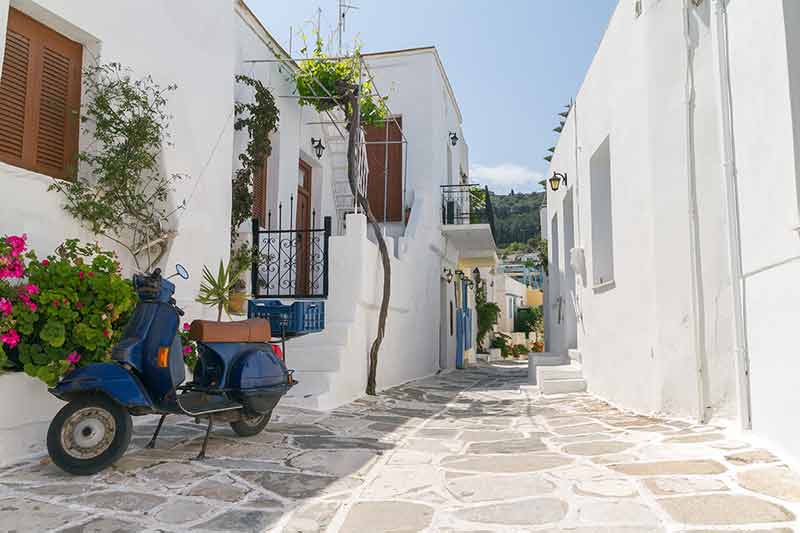
Day 3 Paros
Paros is a small island covering 193.2 sqkm (74.63 square miles).
There are buses to get around the island and car rental is available.
Driving around the islands isn’t nearly as hectic as on the mainland.
Spend the day exploring Parikia and Naoussa.
Parikia has a beautiful Old Town with cobblestoned narrow alleys, trendy shops, and restaurants serving delicious food.
There are a couple of interesting Greek Orthodox churches to visit including the 6th-century Hundred Doors Church.
Nobody knows why it is called this as it doesn’t have a hundred doors, but it is worth going inside.
It has a beautiful marble iconostasis and a spectacular baptistery, uniquely carved.
Naoussa has a lovely harbour where you can enjoy a coffee or a drink.
There are the remains of a 15th-century castle to visit and many churches.
From the Faneromeni Church, you get stunning views of the town and the sea.
Naoussa has the best shopping on the island and there are many restaurants and tavernas to choose from, many spilling onto the streets in the summer months.
You may like to book a sailing cruise around the Cyclades.
Day 4 Paros
Depending on your preferences, spend the day either on the beach or hiking or sailing.
There are plenty of beaches on the island to choose from, including the top-rated Kolymbithres Beach where you will find some lovely coves with sun loungers, and the sea is crystal clear.
If you decide to hike, Paros Park is just a short drive from Naoussa and here you will find three relatively easy hiking trails which lead to beautiful views of the island.
There are three beaches within the park so you could combine hiking with a rest on the beach or a swim in the sea.
Another hiking trail is the famous Byzantine trail which is 3.5 km (2.17 miles) long between the town of Lefkos and the town of Prodromos.
Lefkos is an 18-minute drive from Naoussa.
Day 5 Naxos
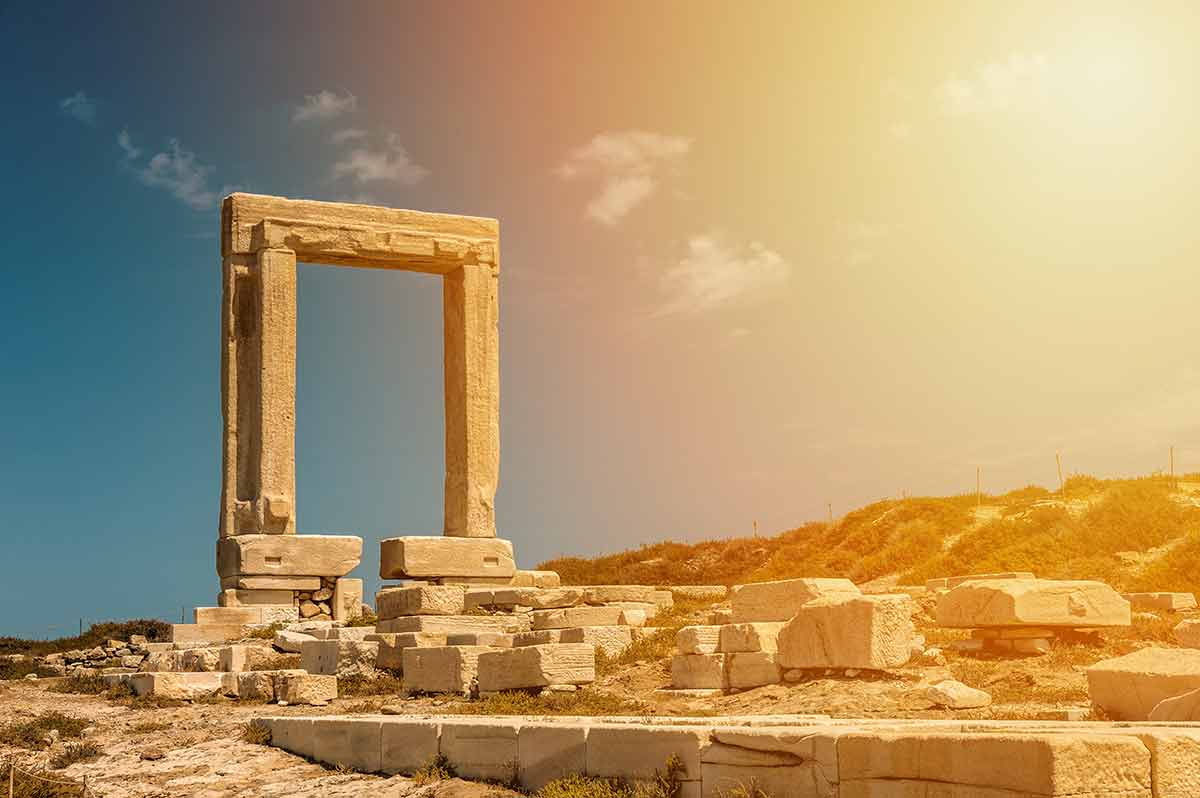
Spend the morning at leisure and then take the ferry to Naxos after lunch.
It takes less than an hour and docks in the capital of the island, Naxos Town, which is a good place to stay.
Naxos is the largest of the Cyclades islands and is beautiful, with sun-kissed beaches and imposing mountains.
It has over 200 Byzantine churches, so you have a good choice if you want to sightsee.
There are many restaurants and bars in Naxos Town, so you won’t have far to go for a good meal in the evening.
Day 6 Naxos
If you want to explore further afield, take an organised full-day bus tour of the island or a catamaran cruise.
It takes you to the Demeter temple, which was built in 530 BC, the archaeological museum, and the village of Damalas where you will have a pottery-making demonstration.
Have lunch in the neoclassical village of Chaliko and visit its art galleries before going to the marble village of Apeiranthos, and the seaside village of Apoollonos where you will have an opportunity to go swimming.
Day 7 Mykonos
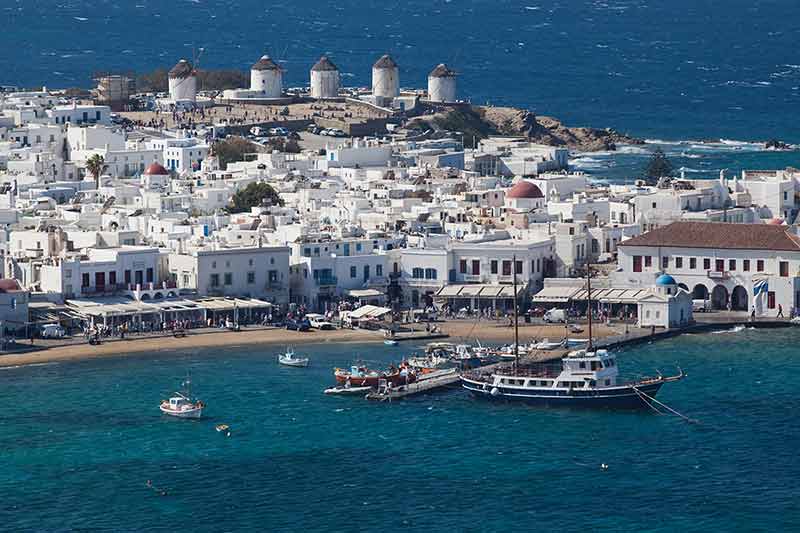
Enjoy a leisurely morning and early lunch on Naxos then take the 1.20 p.m ferry to Mykonos.
It takes around half an hour and you can book online here.
Stay in Mykonos Town.
Mykonos is considered to be the party island of Greece with plenty of nightclubs and bars to be found, and parties even take place on some of the beaches.
Many of the beaches are connected by water taxis as well as by buses but you could instead hire a car.
In the afternoon, explore Mykonos Town.
Visit the Mykonos windmills and shop ‘til you drop.
Shopping is fantastic on the island, especially when it comes to jewellery and clothes.
In the evening, go to Little Venice for a stunning sunset and have a cocktail and a meal there.
It is one of the trendies areas in town.
Day 8 Mykonos
Take a morning tour to the archaeological site of Delos which is a 30-minute ferry ride away.
Building here began in 478 BC and the site has been well-preserved.
Visit the Temple of Apollo, the Colossus of the Naxians, and the house of Dionysus where you will see some beautiful examples of art in the form of mosaics and paintings.
Have a relaxing afternoon on one of the many stunning beaches.
Paradise and Super Paradise are great for partying, Platys Gialos is popular with families because of the shallow waters, and Kalafatis is ideal for windsurfing.
In the evening, enjoy the nightlife.
There are many bars and nightclubs to choose from, mainly in Mykonos Town, and they are open until the early hours of the morning.
There are also clubs at some of the beaches, such as Paradise Beach and Super Paradise Beach.
Paradise Beach has one of the top clubs on the island, Cavo Paradiso Club.
Day 9 Mykonos
If you don’t want to spend all day at the beach, discover the authentic Mykonos away from the tourists on a day tour to a traditional Mykonian farm in the village of Ano Mera.
Here you can take part in farming activities and then explore the monastery in the village square and the open-air market.
After lunch, visit some secluded beaches and explore the narrow streets of the village of Maou.
An alternative tour would be a wine tasting with a visit to the vineyards.
You might not have heard much about Greek wines, but believe me, they do make excellent wines.
Spend the rest of the day at leisure.
Day 10 Mykonos – Athens
Return to Athens either by ferry or plane.
Also read:
- 20 Movies About Greece
- 20 Incredible Greek Landmarks
- 20 Famous Landmarks In Athens
- 20 Fairytale Castles In Greece
- When To Visit Greece
- 20 Beaches In Greece
- 20 Things To Do At Night In Athens
- 20 Day Trips From Athens
- 20 Cities In Greece You Will Love
- 20 Best Beaches in Mykonos
- A Guide To Winter In Greece
- 20 Things To Do In Mykonos
- 20 Things To Do In Rhodes
- Where To Stay In Athens
- 20 Museums in Athens
- 20 Things To Do In Santorini
- Best Greek Islands To Visit
- Car Rental Athens Tips
- Car Rental Mykonos Tips
- Where To Stay In Crete
- 20 Greece Tours For Your Bucket List
- 15 Things Greece Is Famous For
- 10-day Greece Itinerary
Itinerary 3 – Dodecanese Islands
Days 1 and 2 Athens
Follow the first two days of Itinerary 1 exploring Athens.
Day 3 Kos
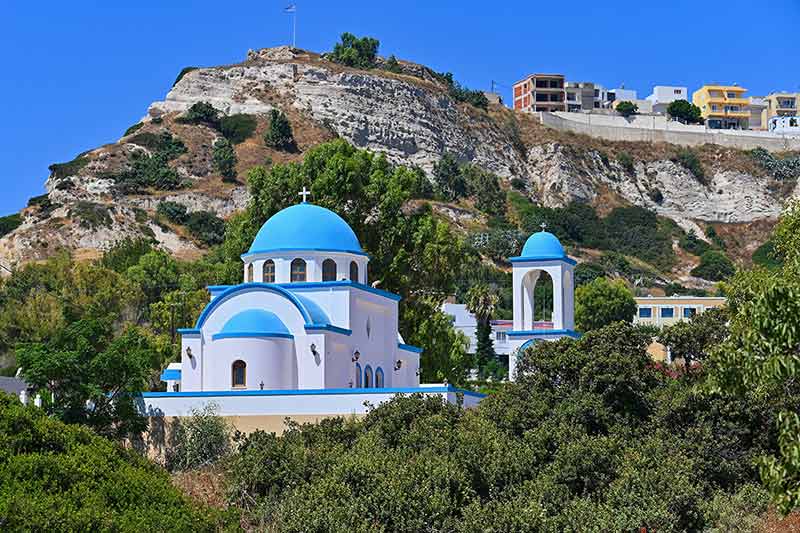
Catch the morning flight to Kos and stay in Kos Town, the capital, a lively town with a mix of Roman, Venetian, and Ottoman heritages.
Kos is regarded as the birthplace of Hippocrates who was the father of medicine.
Spend the afternoon at leisure.
Explore Kos Town or relax on one of the two town beaches, Kritika Beach or Kos Town Beach.
Have a meal and enjoy the nightlife in the evening.
The nightlife is based around two streets, Daikon and Nafklirou which are lively until the early hours.
Day 4 Kos
Take a guided tour of Kos which lasts for seven hours and gives you a great introduction to the island.
You first visit the beautiful Old Town in the capital and then visit the archaeological site of Asklepion dating to the 4th century BC.
Explore the traditional village of Zia and then go to a honey factory where you can try the produce.
Then travel to the other side of the island for spectacular views of the island and sea from Kefalos.
If you like cruising, you can join a cruise to Kalymnos, Pserimos and Plati.
Day 5 Kos – Rhodes
Have a leisurely brunch and then catch the 12.55 p.m ferry to Rhodes, which arrives at 4.30 p.m.
You should stay in Rhodes Town where there are many restaurants, cafes, bars and shops.
The atmosphere is lively and fun.
Day 6 Rhodes
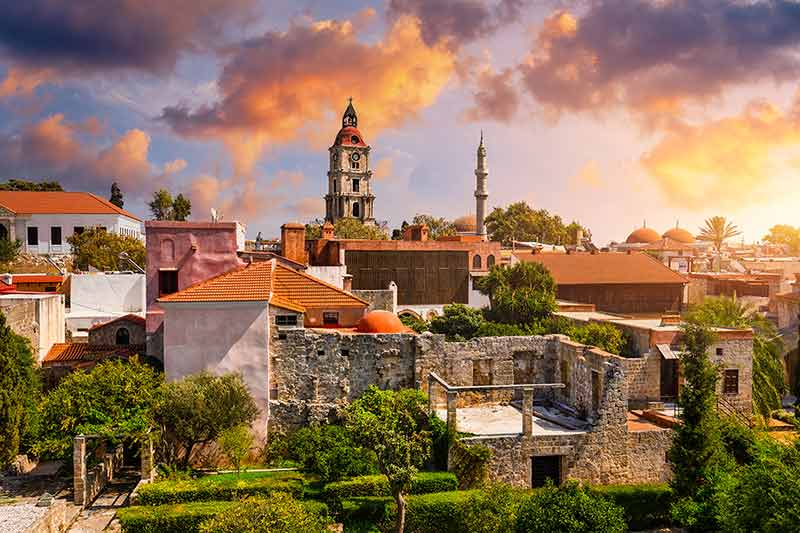
Explore Rhodes Town.
There is plenty to see in the mediaeval Old Town such as the Palace of the Grand Master, the Archaeological Museum, and the Mosque of Suleiman the Magnificent.
Climb the 53 steep wooden steps in the 7th century Clock Tower for magnificent 360-degree views of the town, sea, and surrounding area.
There are beaches just after Rhodes Town if you prefer to relax and enjoy the sun and sea or join a relaxing sunset cruise.
Day 7 Rhodes
Take an organised bus tour to the beautiful village of Lindos and the Seven Springs Valley.
The tour bus takes you out along the east coast to Lindos where you have four hours to explore.
You can visit the Acropolis, swim from the sandy beach, and have an authentic Greek lunch at one of the tavernas in the village.
Then head to Seven Springs Valley where a guide will take you to see the springs, waterfalls, and the wild peacocks and ducks.
Day 8 Crete
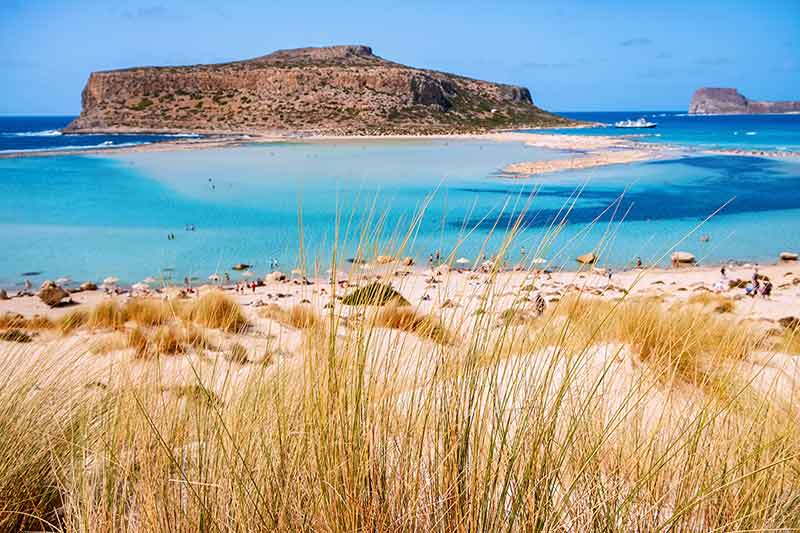
Take the morning one-hour flight to Heraklion in Crete, the birthplace of the Minoan civilisation.
Stay in the city of Heraklion and explore the town on your own.
Visit the Archaeological Museum which houses a large collection of Minoan artefacts.
There are plenty of restaurants, bars, and cafes in the city for you to enjoy at any time of the day.
For a dash of adventure, try an off-road safari tour to Lasithi Plateau and the Cave of Zeus.
Day 9 Santorini Day Trip
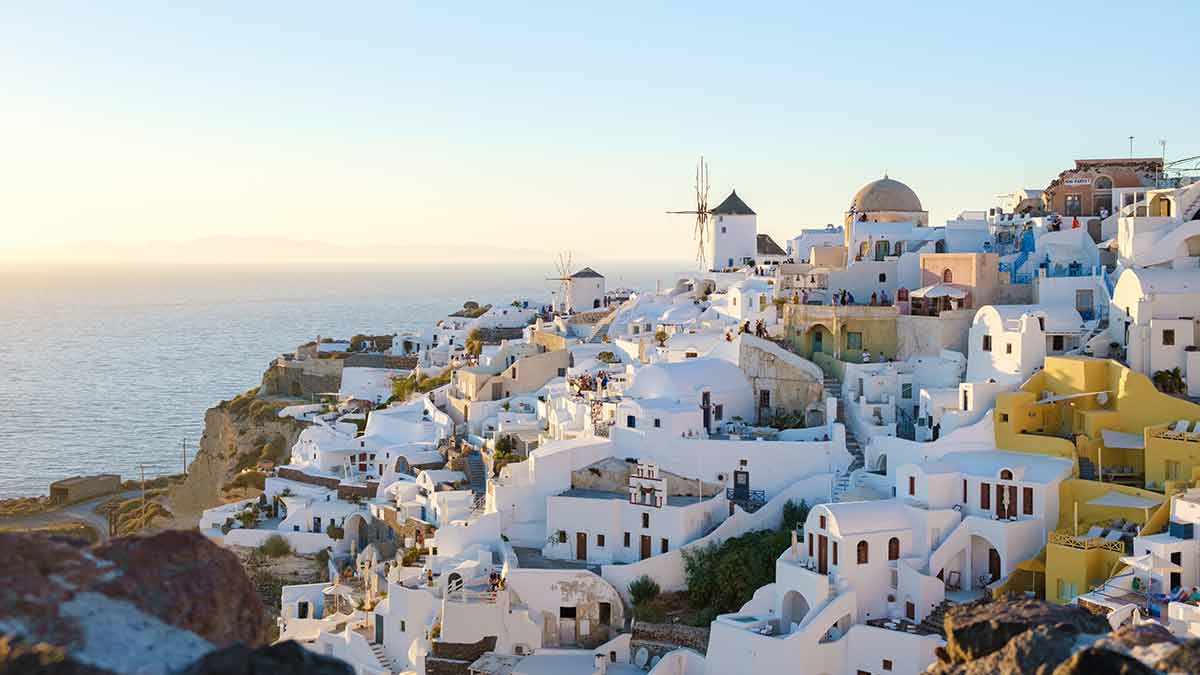
Spend a day on the beautiful island of Santorini.
The ferry leaves Heraklion at 8 a.m and arrives in Fira on Santorini at 9.50 a.m and you can bring a vehicle. It’s a popular route so it’s best to reserve your tickets in advance online.
Explore the town which has museums to visit including the Archaeological Museum, the Folklore Museum, and the Museum of Prehistoric History.
The highlight, however, is the Catholic Church of Dormition with the Three Bells Of Fira.
It is one of the most photographed buildings on the island and often appears on postcards.
The church has stunning blue domes with white walls, and of course, there are three bells.
From here, you get beautiful views out to the sea and of the town.
For lunch, head to Theotokopoulou Square, which is popular with the locals so you know that the tavernas will be good.
The ferry leaves Santorini at 4 p.m and arrives back in Heraklion at 5.45 p.m. If you’re planning a longer stay in Santorini, a luxury catamaran cruise is great way to treat yourself and a volcanic island cruise visiting the hot springs is also popular.
Day 10 Heraklion – Chania
You can’t visit Crete without going to Knossos, the main city of Minoan Crete, one of the earliest and most advanced civilisations.
You can take a guided tour so that you will be able to learn more about the Minoans.
The site covers 10 metres 2 (3.9 miles 2) and was first settled around 9,000 years ago although the first palace was built in 1,900 BC.
Many of the artefacts found here are in the Archaeological Museum of Heraklion.
After lunch, take the bus to Chania on the northwest coast of the island which, in my opinion, is the most beautiful city on Crete.
I may be biased as I live close to Chania, but the Venetian harbour and Old Town are spectacular.
Stay in Chania and spend the evening exploring the Old Town and having dinner in one of the many restaurants or tavernas lining the harbour.
Day 11
A day at leisure in Chania.
There is plenty to do such as visiting the museums, including the Archaeological Museum, the Folklore Museum, and the Maritime Museum.
Alternatively, you can book a trek through the Samaria Gorge in the White Mountains.
It is only for the fit and healthy as it is 16 km (9.94 miles) long, has many boulders to clamber over, and is the longest gorge in Europe.
However, it is a beautiful trek with breathtaking views, taking you to the south coast of the island.
From here you get a boat to Chora Sfakion where you will be picked up by your coach.
An option for beach lovers is a day trip to the famous Elafonisi Island which has a pink sand beach.
Day 12
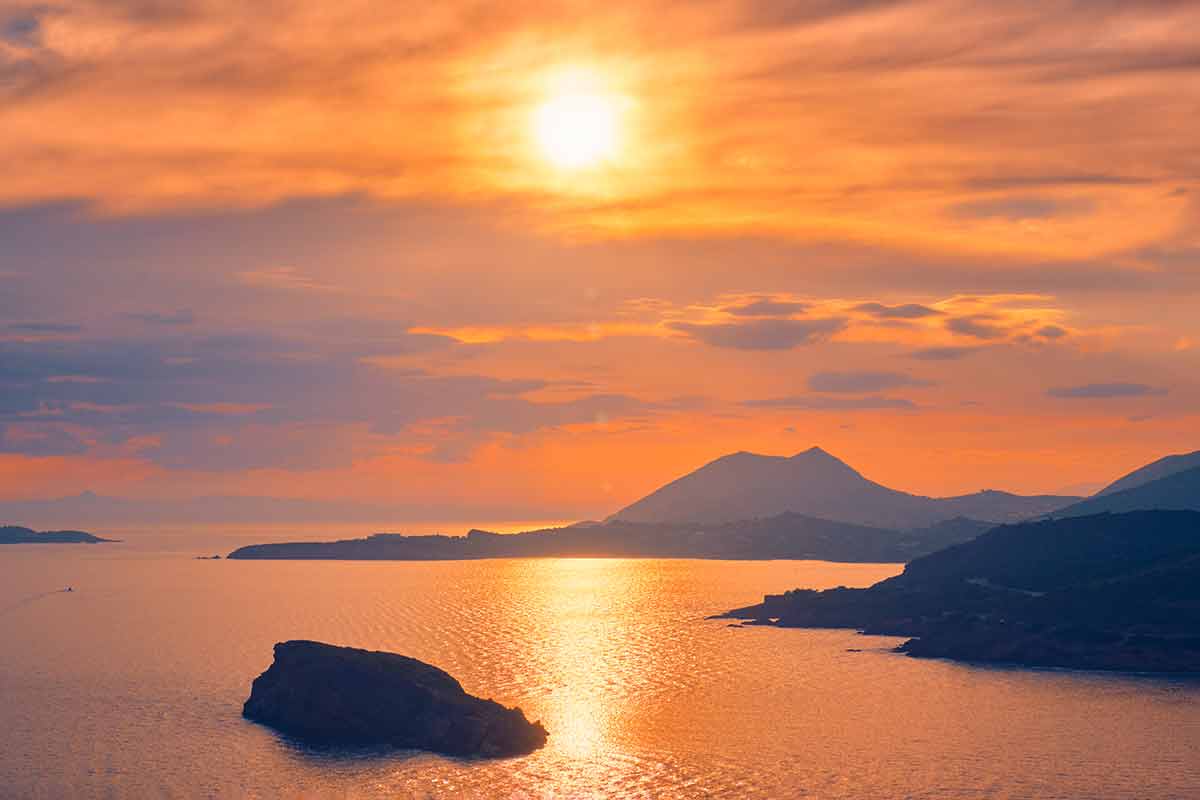
Take either the ferry or a plane to Athens.
Alternatively, Chania is an international airport during the summer season, so you may be able to fly to your home destination from here.
Looking for more itineraries? Try these:
Plan Your Trip

Rent A Car – Find the best car rental rates at Discover Cars. They compare car hire companies to provide you with the best deal right now.

Find A Hotel – If you’re curious about this article and are looking for somewhere to stay, take a look at these amazing hotels.

